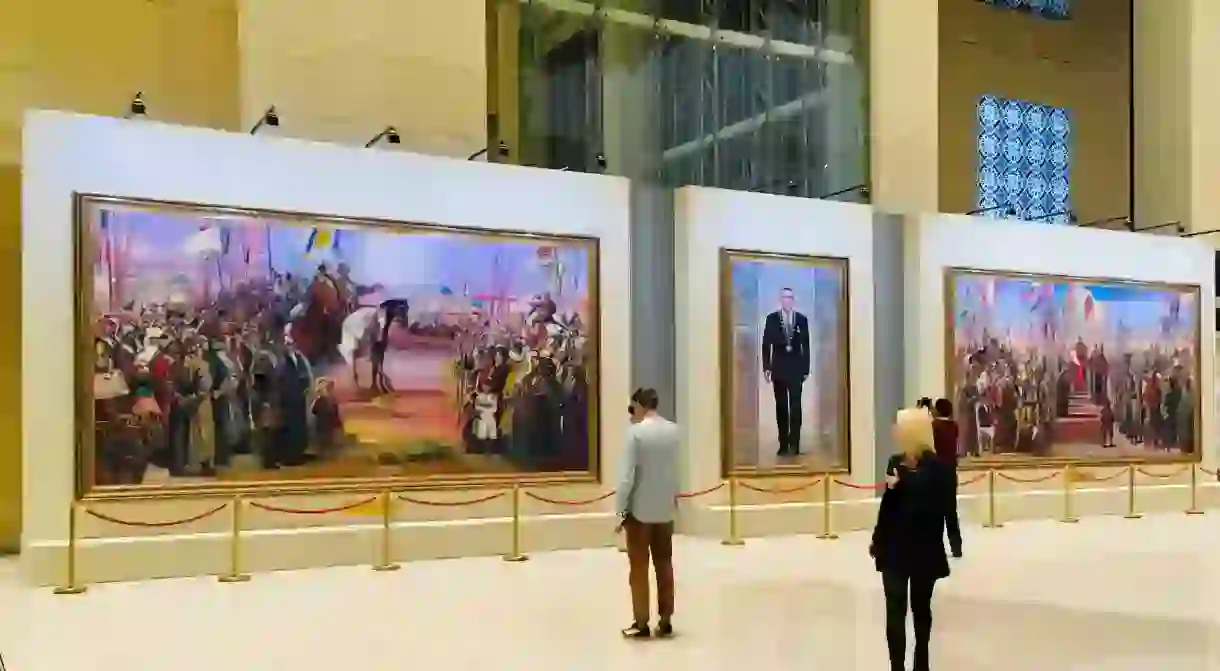Discover the Secret Legacy Behind the National Museum of the Republic of Kazakhstan

From the pickled innards of a 4th-century-B.C. horse to the ceremonial vestments of an ancient Saka “Gold Warrior,” discover the story behind some of the world’s best preserved relics of ancient nomadic culture.
Kazakhstan’s National Museum, built only in 2014, sprawls its unique treasures over an epic nine floors and 74,000 square meters, and Madiyar Shakiyev, our guide, takes us on an exclusive behind the scenes tour.

Its rich historical legacy is heralded from the moment you step inside the grandiose entry hall, where a giant golden eagle soars over a vast map of the world’s largest land-locked country.
It’s a legacy that spans centuries from the Stone age, charting everything from the post-Mongol rise and decay of the Kazakh Khanate, and the colonial policy of the Russian empire to the national liberation struggle against the Tsarist regime.

As we weave through the Hall of Ethnography with its rich collection of nomadic objects, reams of unique pottery masterpieces, military art, and jewelry worn by the ancient Saka peoples, the scope of treasures on display seems almost unbelievable.

But these artifacts are just building up the history-lover’s appetite for the ultimate gem of this museum, the Golden Hall, gleaming with rows of mainly original pure gold artifacts.

Not only does the Golden Hall boast an impressive collection of real Kazakh pure gold jewelry, but also ceremonial vestments of the Saka “Gold Warrior” from the 3rd/4th-century and thousands of rare Bronze Age ornaments.

These findings are complemented by replicas from the Scythian burial mounds at Berel, the Issyk burial mound where the Golden Man was found, and a bejeweled replica of a horse from the Berel tomb. It’s a spectacle of glorious beauty.

The display harks back to when 13 horses were found in a burial mound with all the equipment and harnesses, along with jewels made from wood saved in a condition museums can usually only wish for.

“The Altai is the ideal location for creating eternal preservation,” explains Shakiyev, referencing the mountainous climate where temperatures regularly plummet to as less as -50 °C (-58 °F) during winter.

“Thanks to the ice, artifacts like the wooden jewelry and the golden artifacts, also the decorative horse equipment, have managed to be preserved. This makes them all incredibly special.”

What’s interesting is that not only were many of the relics fished out from the frozen earth, but the wealth of this collection largely owes itself to chance. Shakiyev tells us that several of the 7th/8th century gems were simply stumbled across by children when playing next to the mountain rivers (once the preserving ice had melted).

“The Hall of Gold is one of the most special exhibits, in my opinion. After gaining independence in 1991, the golden man became one of the symbols of Kazakhstan. The first finding of the golden pieces demonstrate the amazing craft and skill of the time.”

The territory of Kazakhstan is so huge and far-reaching, stretching across an unbelievable 2,724,900 square kilometers (1,052,100 square miles), that it is simply not possible to embark on a full excavation dig. In fact, it is the world’s largest landlocked country, meaning that undoubtedly, there remain endless treasures to be discovered.














